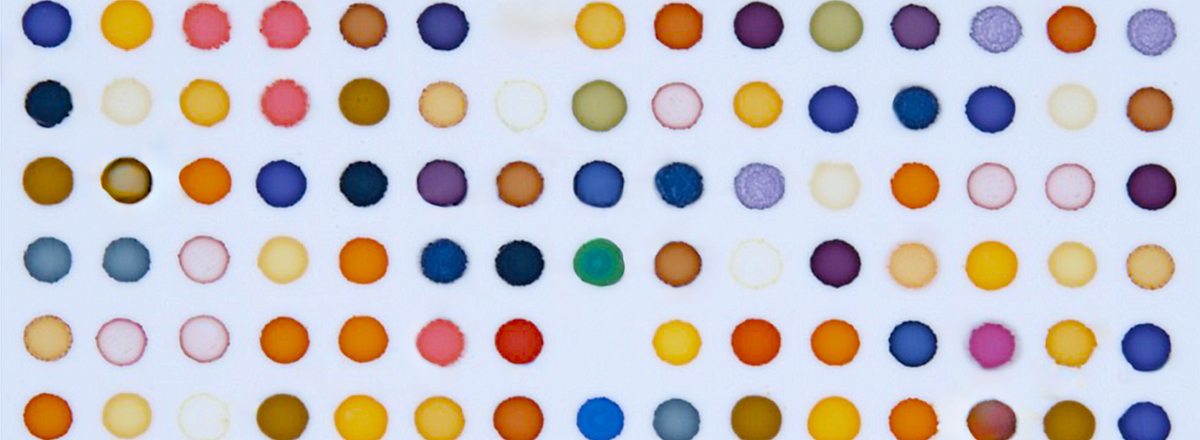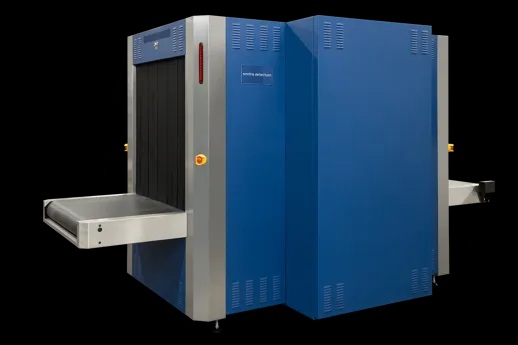'Sniffer dog' device to feature at London art exhibition

Above:
The ‘sniffer dog’ device detects illicit chemicals through a visual sequence of coloured dots.
Courtesy Cranfield University
Dr Licia Dossi, Senior Lecturer in Defence Chemistry, contributed to the development of CRIM-TRACK technology that can support the fight against organised crime and terrorism and contribute to global security. The ‘sniffer dog’ device quickly detects illicit chemicals through a visual sequence of coloured dots. The technology is being incorporated into a new exhibition, Valency - a hybrid exhibition bringing together the fields of art and chemistry, which launches at the APT Gallery in London on Thursday 23rd November.
Quick and accurate tool could replace sniffer dogs
CRIM-TRACK uses a colorimetric technique which detects the vapours given off by illicit chemicals through the change of colours appeared in a microchip containing dyes. The pattern, revealed by an algorithm developed by the team, indicates which chemicals have been identified.
Dr Dossi worked with the Technical University of Denmark and Crimtrack Aps to develop CRIM-TRACK. She said: “Our technology can detect trace quantities of drugs and explosives as well as the chemicals needed to make these. The device we have invented is cheap, easy to use and quick to give results – so it has great potential as a tool for customs officers, police and other agencies who need to detect substances quickly.”
CRIM-TRACK could replace sniffer dogs in airports and be used in security settings where quick and accurate detection of chemicals is key. For instance, for law enforcement agencies the device could be an effective tool for controlling trafficking of criminal substances. The technology uses highly advanced disciplines including organic chemistry, engineering, machine learning, micro fabrication and hardware technology and signal processing techniques.
Chemistry of Colours Exhibit
The Valency exhibition brings together diverse participants creating an artistic ‘chemical reaction’ within the audience’s imagination.
Cranfield’s art installation features a video showing an enhanced view of the coloured dyes changing colour, along with a 3D molecular dog displaying a real microchip on its nose. In the hub area of the exhibition there will be a video explaining how research at Cranfield University has helped develop the dyes which are used to make a microchip sensor. All the exhibition materials are designed by the Cranfield Defence and Security Team.
Exhibition curator Paul Malone said: “Research chemistry and contemporary art practice are often perceived as distant relatives occupying unique fields. Many of the experiments in chemistry are derived from observations of natural phenomena and then seen to be explored within the closed environment of the laboratory. Artists follow a similar path in the studio; although each has its own set of protocols. From an historical perspective both chemistry and art have been associated with magic, alchemy and the manufacture of unique compounds.”












